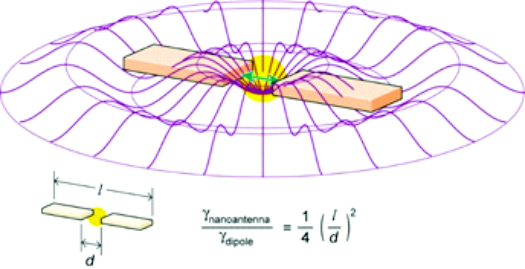
We have recently witnessed substantial progress in the realization of active plasmonic nanostructures1 exhibiting large spontaneous-emission enhancements and, simultaneously, high quantum efficiencies [1]. An important current objective in the field is to accelerate spontaneous-emission rates to such a degree as to create light-emitting diodes (LEDs) having modulation speeds exceeding those of typical semiconductor lasers, which are usually [2, 3] in the range ∼ 20–50 GHz.
In this theme, we work on a range of nanoantennas-based LED device designs exhibiting spontaneous-emission enhancements larger than a factor of, at least, hundreds, with quantum efficiencies exceeding 50%. Key comparative advantages of these structures compared to conventional dielectric-microcavity designs include the fact that the enhancement of spontaneous emission can be nonresonant (i.e., broadband), and that the plasmonic nanostructures can be spectrally and structurally compatible for integration with a wide class of emitters, including organic dyes, diamond nanocrystals and colloidal quantum dots.